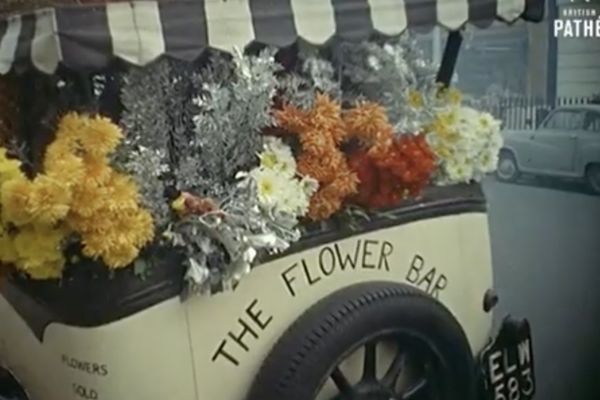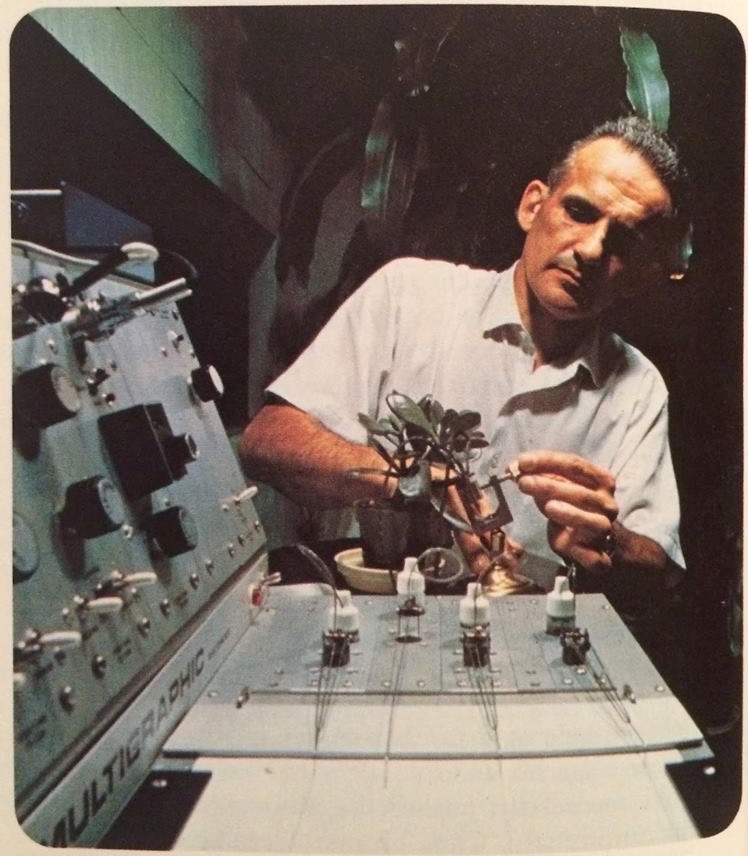
Cleve Backster.
Think twice the next time you pluck a daisy from the sidewalk, because that flower may actually be ‘screaming’ in a language you don’t understand— or at least, not yet. Today, we’re cracking the code of the fascinating world of plant sentience, a.k.a., the secret way in which everything from your Ikea houseplant to a 200-ft tall sequoia tree is communicating, feeling, even socialising. Let’s start by hearing this guy out:
Aside from the whole “invisible gnome” thing, this Ghostbuster-meets-Bill-Nye dude is on to something. We know plants wilt, grow, and move — sometimes, quite quickly (hi, Venus Fly Trap), and to a degree that’s made them fodder for things like 1986’s Little Shop of Horrors or M. Night Shyamalan’s 2008 film, The Happening. All this guy’s done is hook up a transducer to the plants in order to convert their biofeedback into something our ears can hear. Still lost? Think Google Translate. But for your Cactus.
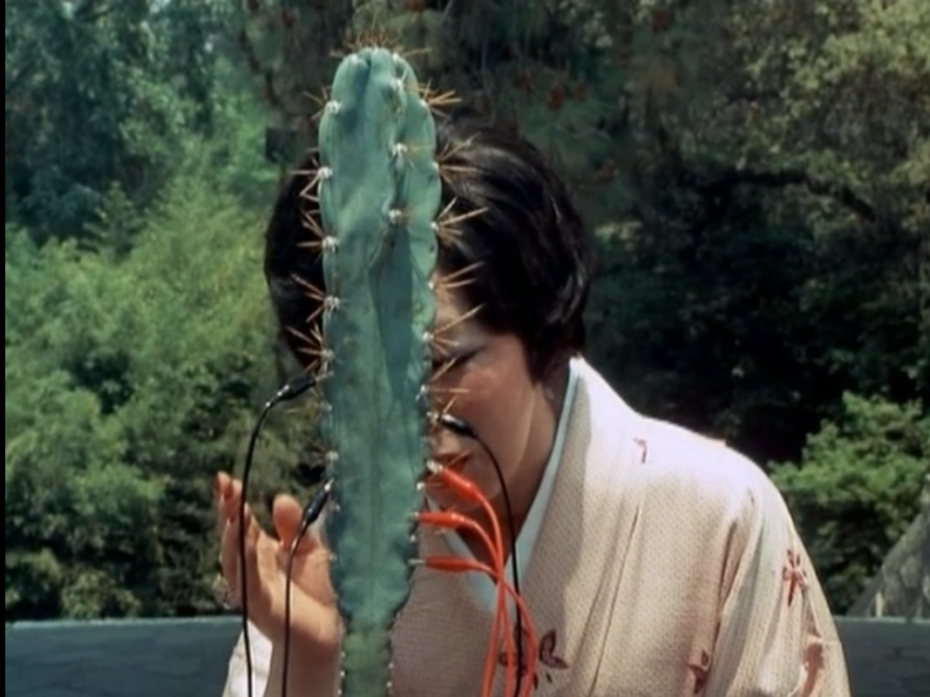
A still from the film “The Secret Life of Plants” (1978)
“The sedentary lifestyle of plants can give the false impression that they are passive participants in interactions with other organisms and the broader environment,” writes Mark C. Mescher with Consuelo M. De Moraes in a 2014 article from The Journal of Experimental Botany, “In fact, plants have evolved sophisticated perceptual abilities.”

But it was a 1973 book by two Americans, The Secret Life of Plants, that truly kicked-off a nation-wide fascination with “plant feels”. The book’s authors, Peter Tompkins and Christopher Bird, hooked up plants to their polygraph to gauge responses to various stimuli, and found that plants ‘hummed’ when they ‘held hands’ (or roots), reacted positively (and even grew faster) when exposed to certain music, etc.
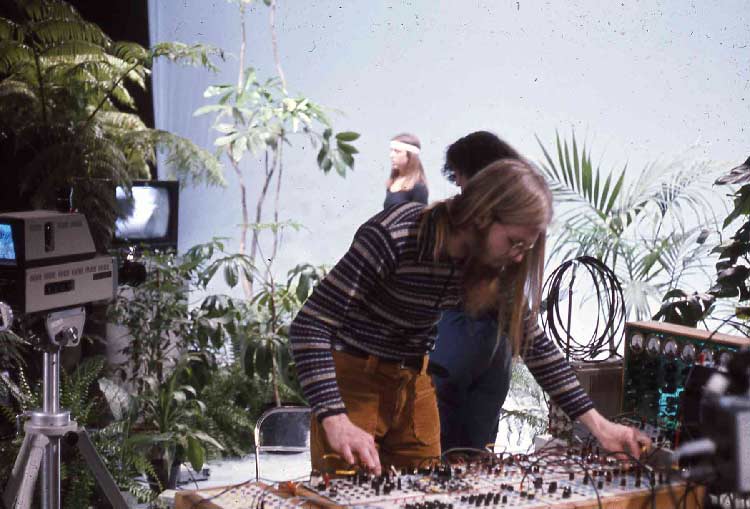
via Data Garden
Naturally, scientists turned up their nose at the experiments. Yet the CIA had already started testing for plant “intelligence” years earlier, thanks to a man named Cleve Backster, who claimed that plants had a power more complex than we could have ever imagined, called “Primary Perception.” Unfortunately, it was a theory that ostracised him from the mainstream research community….
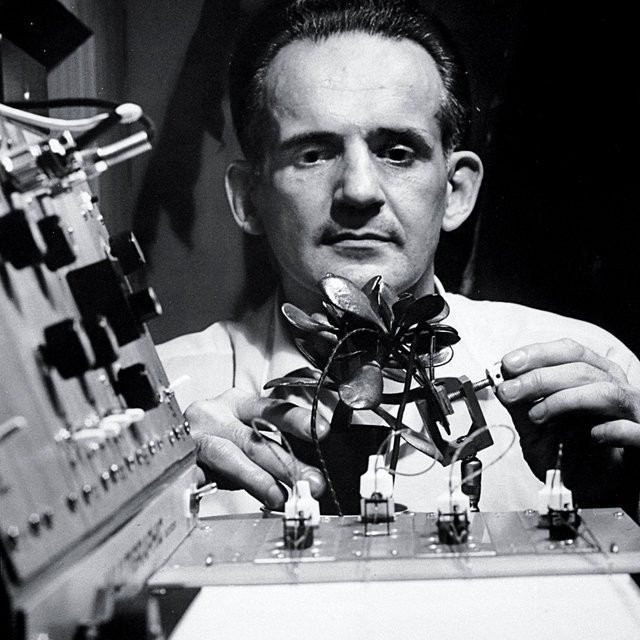
One day, Backster wanted to induce stress on a houseplant by lighting its leaves on fire. But even before he’d found a box of matches, the plant’s polygraph started bouncing off the charts — as if it had, somehow, he said, read his mind. Sound bonkers? In 2012, a researcher at the Manna Center for Plant Biosciences in Tel Aviv reported that plants are able to see us with photoreceptors that absorb different wavelengths of light. That means they not only know when you’re in the room, but they know the colour of the shirt you’re wearing.
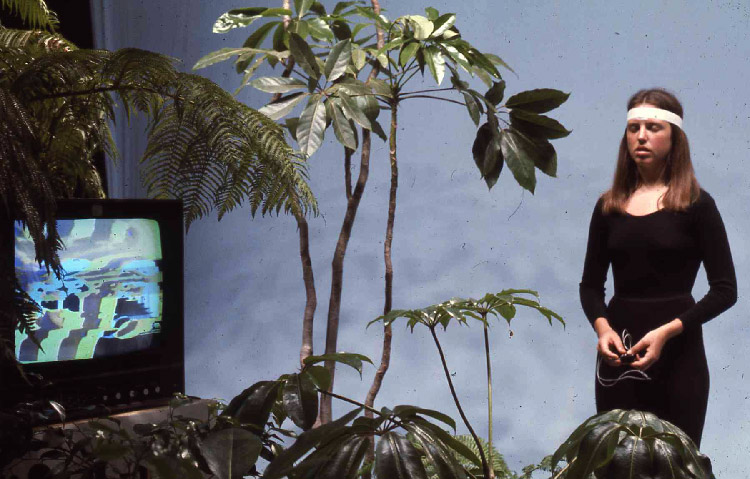
via Data Garden
So if plants can feel, does that mean they’re capable of empathy? Dr. Robert Lanza, a biometrics expert, would say that depends on your definition of the word. “We think of time — and thus consciousness — in human terms,” he told Psychology Today in 2017, “Time isn’t an object or thing; it’s a biological concept, the way life relates to physical reality. It only exists relative to the observer.” So think about your own consciousness. And realise, he says, that even if you didn’t have your eyes, ears, and various human sensory organs, you’d still technically be conscious. Only, that consciousness would mean something quite different.

A plant polygraph.
But plants don’t have neurons! They don’t vote, observe Chanukah, or do laundry! Lanza would say we’re still missing the point; plants are still able to exchange information, and actually she points out Chamovitz’s finding that plants have variants memories. “And not just [a] simple reflex,” she says, “Plants definitely have several different forms of memory, just like people do. They have short-term memory, immune memory and even transgenerational memory! I know this is a hard concept to grasp for some people, but if memory entails encoding information, retaining the memory (storing information), and recalling the memory (retrieving information), then plants definitely remember.”

via Data Garden
In other words, trying to understand a plant’s definition of memory in the context of a human’s is like forcing a round peg in a square hole. Plants just might have their own version of Chanukah, but for the moment, we don’t have the means of understanding. Something is still getting lost in translation.
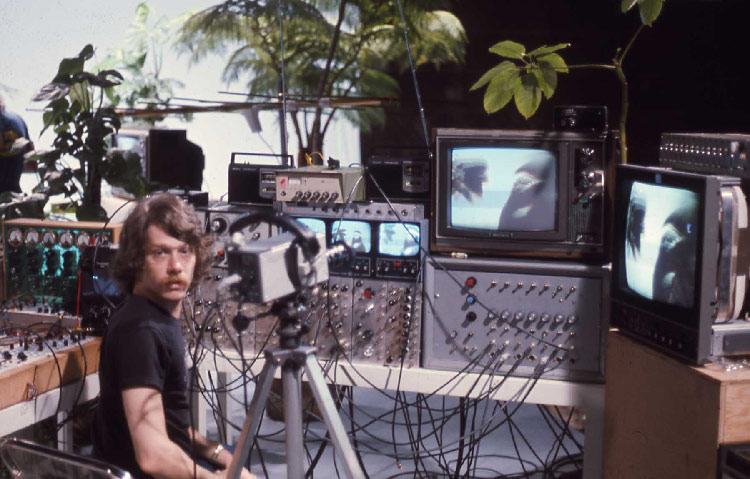
via Data Garden
But at the end of the day, the 1970s was simply the perfect cultural climate for theories on telepathic plants to blossom; an era of peace, love, and emerging environmentalism where it was only natural one should talk to his or her monstera. Suddenly, there was even a market for plant-friendly music (with 1976’s Plantasia becoming a real standout).
Hell, Stevie Wonder even did the soundtrack for the documentary version of The Secret Life of Plants, and today, a company called MIDI is selling biofeedback machines so you call “listen to the music of plants.”
Our verdict on plant consciousness? A bit on the fence, but we’re willing to give it a go…
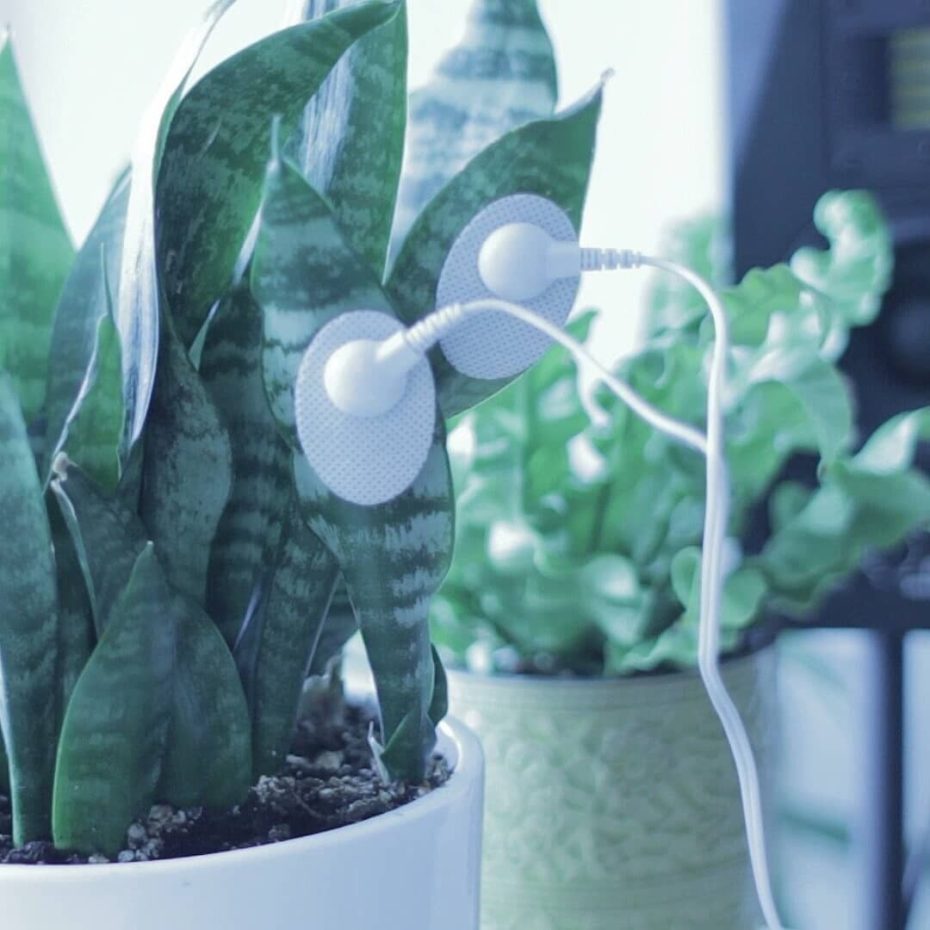
Data Garden sells the MIDI Sprout packs that include everything you need to listen to your plants play harmonious sounds from a biodata sonification device to the electrode pads.







